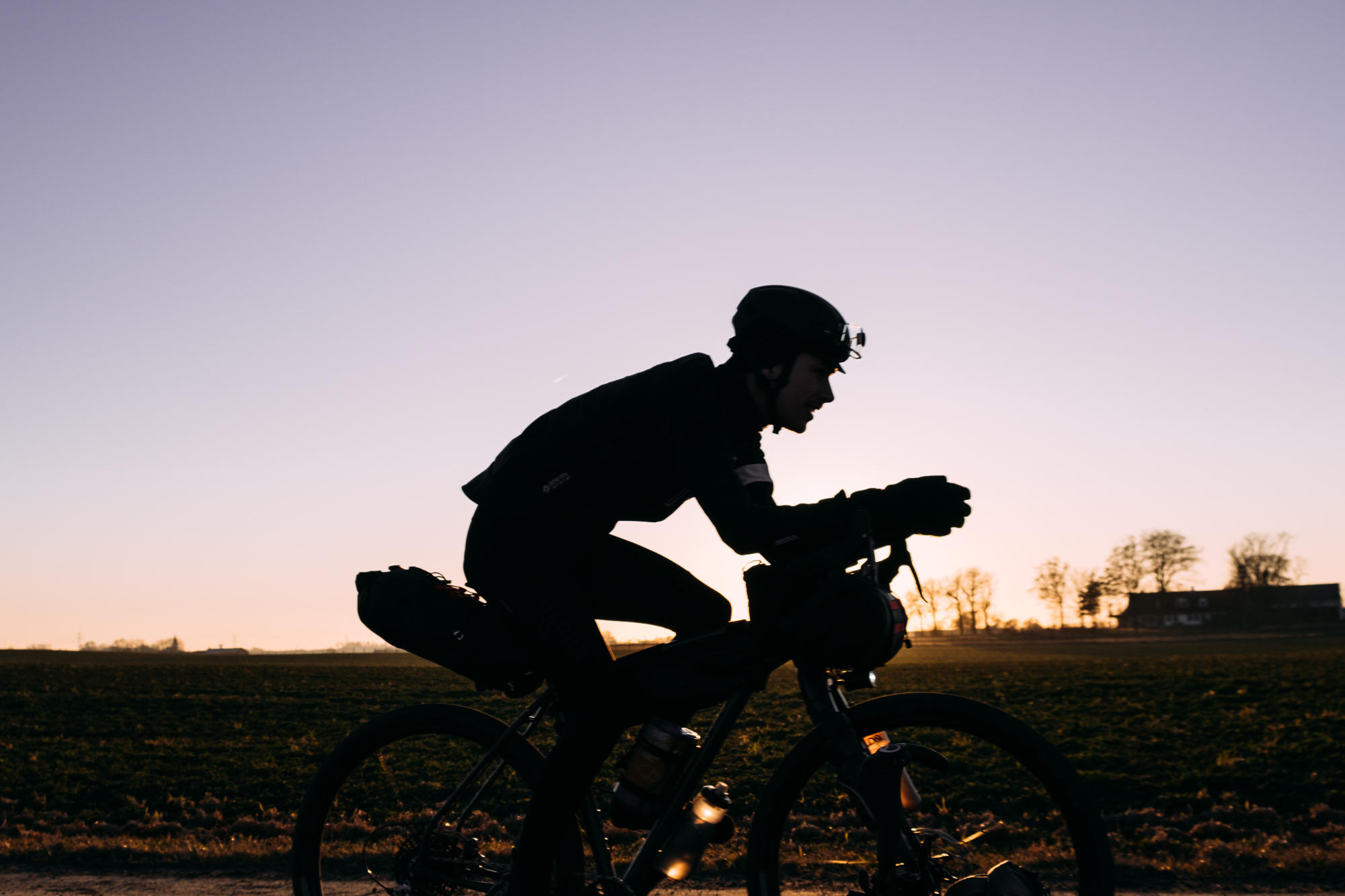Winter bikepacking takes a special breed of cyclist. You have to be willing to embrace the cold winds and snow. Yes, it can be cold. Very cold. But if you prepare, it can also be a liberating experience when the rest of the world is stuck indoors. Here are five tips to help you survive the cold on your next winter bikepacking adventure.




Tip #1 Eat a hearty breakfast
Your body needs fuel to warm up and keep you going in cold weather. Make sure you eat a hearty breakfast before heading out on any long rides. Eating a warm and filling breakfast will help you get off to a good start in the morning, while also keeping you full until lunchtime.
The best breakfast meal when camping is of course porridge. Make a mix at home with oats, nuts and seeds and add milk powder, so you only have to add hot water in the morning.





Tip #2 Don’t forget to drink
Avoid dehydration while bikepacking in colder weather by drinking lots of warm water. When exercising in the cold, it’s easy to forget to take regular sips from your water bottle. But it’s even more important than ever to drink enough water. Just like we lose body heat through our heads, we also lose water through our heads — you’ll have a runny nose, and you’ll be breathing out warm, moist air. This means you’ll still need to drink plenty of water to replenish.
You can use an insulated water bottle or a thermos with warm water, so you don’t feel like the outside cold runs straight into your body when you drink.




Tip #3 Keep body temperature up
You’ve probably heard it a million times before, but we want to stress the importance of layering up, preferably with merino wool. Wearing multiple thin layers rather than one thick layer will trap more heat between the layers.
It also makes it easier to manage your body temperature by adding or removing layers as you get warmer or colder during the day. We advise merino because it helps with the next tip.



Tip #4 Stay dry
When you start cycling, you might also start to sweat. Wool however, absorbs but also wicks moisture out through small openings within the fabric. This way, the surface of wool yarns remains dry to the touch, thus less cold.
In winter, you don’t want to cycle around wet and cold from an unexpected rain shower. So it might be worth carrying the real-deal rain gear and gloves even when the weather looks decent.







Tip #5 Use lithium batteries
You don’t want to run out of power on your bikepacking trip. And cold-weather conditions can be devastating to alkaline batteries. Try to keep your electronic devices in your sleeping bag at night and invest in good batteries. Lithium batteries are less affected by cold, but they’re expensive. Alkalines will save you money. But the money you saved on your alkaline batteries will seem insignificant if they fail and leave you in the dark.




Do you think you could do bikepacking all year round with these five winter bikepacking tips? Bikepacking in winter is harder, it’s true. But as long as you’re being mindful of the challenges, you too can have an amazing adventure.
Follow all our adventures on Instagram.

Leave a Reply